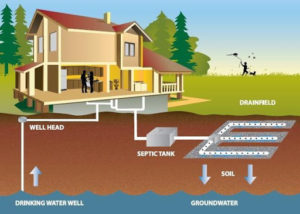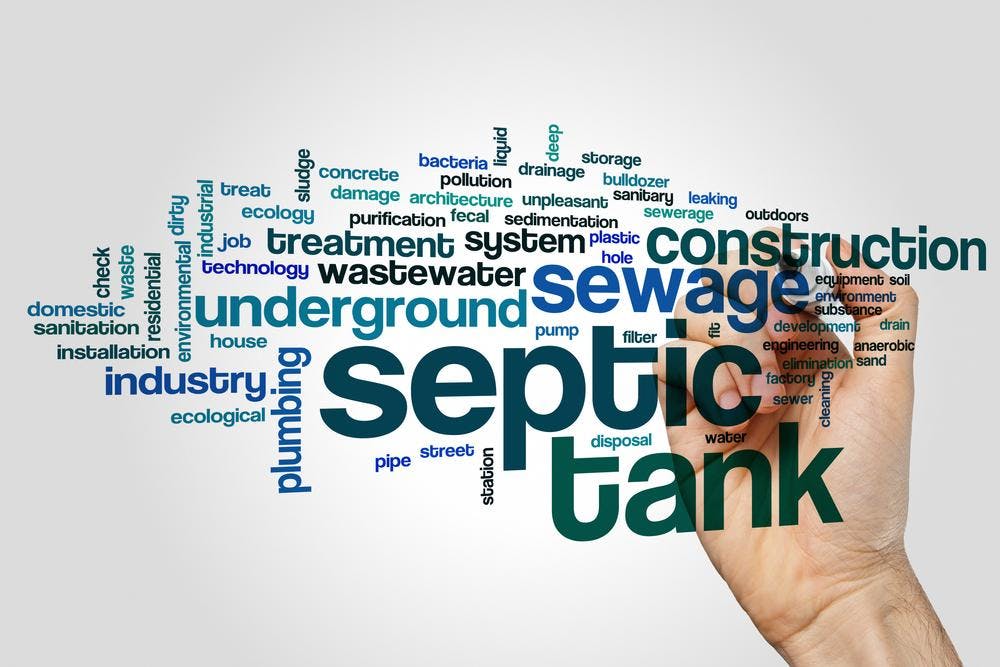People looking to buy a home with a septic system in King County need to know their rights and obligations before and after closing on a deal. It’s a matter of your health and welfare – both personal and financial.
We covered in detail the sellers’ duties leading up to the sale of the property when a septic system is on-site. Now it’s the buyers’ turn to shoulder some responsibilities.
First, some background: The type and amount of soil are the most important aspects when determining which septic system is best for the property. This area of the country typically uses one of four types of septic systems: gravity (the most common), pressure distribution, mound and sand filter. When seeking to design and build a new system, a soil – or percolation – test (aka perc test), at a cost of about $400, helps determine the type and depth of the soil. The sanitarian will examine soil layers and types to determine absorption rates and measure the vertical separation. The designer can then customize a septic system for the property.
Whether new or existing, the septic system is a critical function of a property. It’s important for homeowners to maintain a working septic system and it should never be treated as “out of sight, out of mind.”
It’s critical to know where all of the components of the system are located on your property. An “as-built,” or record drawing, is a technical diagram of your septic system. It’s important to have a copy of the drawing from the local health department (King County Public Health in our area); the as-built can tell you what type of system you have and the location of the components – septic tank, pump tank, sand filter, distribution box and drain field.
Before closing on the sale of a home, sellers are required to provide to buyers a copy of the as-built and Northwest Multiple Listing Service forms 22U (Notice of On-Site Sewage System Operation and Maintenance Requirements, or OSSM) and 22S (King County Septic Addendum) that document the type of system, its current condition and general maintenance records and recommendations.
Buyers typically receive within 10 days of mutual acceptance these septic-related documents and inspection details. Not only should they review the documentation immediately, buyers should also consider hiring their own inspector to protect the potential future asset. This could run a buyer about $300, depending on the size and complexity of the system, but it will be one of the best investments ever made before purchasing a home. (The county offers guidance to find a licensed septic-system professional.)
Buyers also have the option to attend the seller-arranged septic inspection if it has not been previously completed. It’s generally wise not to accept any inspection reports from sellers as the final word. Don’t take my advice, since I am not a lawyer, but instead read Douglas v. Visser, a ruling in our state that puts the onus on buyers to do their own due diligence when inspecting a house before purchase.
Buyers are required to sign a NW MLS form (22V) that simply acknowledges receipt of the 22U. In addition, buyers typically have five days after receipt of the septic documents – particularly the 22S – to approve the inspection report. When replying in the affirmative (or failing a timely response), the transaction simply moves forward with no further action required by either party.
Typically provided five days to respond, the buyer can raise concerns about any portion of the report, terminate the agreement (form 90Y) and have his/her earnest money deposit refunded. Sellers are required to address all issues raised by the inspection report before closing the transaction, but they are not obligated to make unrelated modifications except when the buyer submits septic-related concerns through his/her home inspection addendum (form 35), subject to negotiation. Buyers should be sure to combine all inspection findings before filing the addendum seeking repairs or concessions from sellers.
For most issues with the home, such as mold and rot, buyers/new owners typically have up to three years after purchase to seek remediation – sometimes through the courts – if they can prove sellers hid a known defect. Check with a real estate attorney in these situations.
 New owners unfamiliar with septics should treat the system with care. There are a number of potential issues when dropping the wrong materials into your pipes. For example, it’s wise to limit the use of bleach, which kills helpful microbes that treat wastewater. Liquid fabric softener can seriously alter the chemistry of the septic tank and hinder proper treatment. Kitty litter or pet waste should never go into your septic system. And never put paint, thinners, other chemicals or medications down your drains.
New owners unfamiliar with septics should treat the system with care. There are a number of potential issues when dropping the wrong materials into your pipes. For example, it’s wise to limit the use of bleach, which kills helpful microbes that treat wastewater. Liquid fabric softener can seriously alter the chemistry of the septic tank and hinder proper treatment. Kitty litter or pet waste should never go into your septic system. And never put paint, thinners, other chemicals or medications down your drains.
The failure of a sewage system can not only lead to a health department violation, it may bring on sickness of family members and contamination of shared ground water or public waterways. The costs to repair the system, clean up waste and even possibly find other housing before returning to a cleaned-up property could be in the tens of thousands of dollars. It’s critical that the system is maintained, alarms are never ignored and tanks pumped at intervals recommended by the original designer, inspector or county.
Routine maintenance will more than likely lengthen the life of the system and, long term, save you money. Many systems would benefit from a pump-out every two years or annually if the home uses a garbage disposal. Protect your family’s investment – and health – by managing the operation and maintenance of the septic system.
Buyers can learn more about the local rules and regulations for septic systems through local health department websites in King, Snohomish and Pierce counties.




